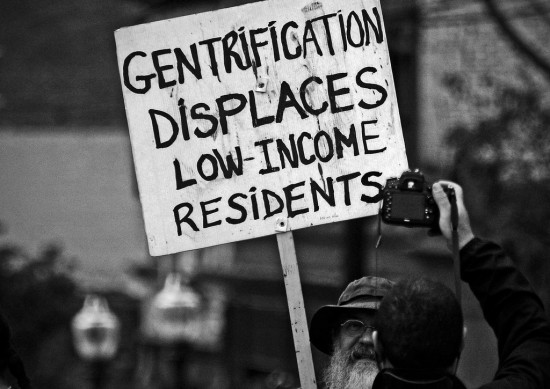I have a great story to tell you.
Not long ago, there was a small town where evil didn’t exist. The town was out in the forest, amid hundreds of trees and small creatures who co-existed peacefully with each other. The townspeople were friendly folks, and each of them had jobs to help the town run as smoothly and peacefully as possible.
Mark was a metalsmith. Heather was a woodworker. Gina was a doctor. Tim was a teacher. John was a firefighter and Kathy was a baker.
Everyone in town had a special job to do. Even the children helped with farming, cooking, cleaning, and feeding the animals. Giving everyone responsibility for the town made everyone care for it a little more, and gave everyone a sense of belonging. The community was strong and people cared for their homes, their land, the animals, and each other.
Then one day, a new person stumbled into town. Jimmy, a man from another town, a place where evil did exist, happened upon the town while exploring the forest. He left his home a few days prior, and got lost while hiking the woods. After a long night of wandering in the dark with nothing but his hunting rifle and a small pack, Jimmy was thrilled to see the light of the quaint, peaceful little town.
“Hey, stranger!” said Mark.
“Whaddaya want?” replied Jimmy.
“I’m just saying hello. Haven’t seen you around here before.”
Jimmy shrugged. “I’m from another town, far away from here. I got lost in the forest… Been searching for my way back for days. Where can I get some food around here?”
Mark spotted Kathy and waved her over. “This is Kathy, our town baker. I’m sure she can fix you up something warm to eat.”
Kathy smiled and nodded, “It’ll just be a minute,” and she hurried off towards her bakery.
Jimmy stood awkwardly with Mark, looking around. He glanced to his right and spotted a deer peeking out of the forest, slowly gnawing on some grass. “Deer meat,” he thought, “that’s what I need. Better than bread.” He cocked his rifle and shot, missing the deer’s head and hitting its stomach.
“Shoot,” Jimmy whispered. He readied his rifle again.
“What are you doing!” screamed Heather, running towards where Jimmy and Mark stood. Mark was shaking with a stunned look on his face.
“Why? Why would you do that?” mumbled Mark.
The deer was squeaking and writhing in the grass. More townspeople gathered around.
“I’m hunting. What? You people never seen a hunter before? You live in the woods…”
“What’s hunting?” Asked Tim, the teacher, who knew just about every word in the book but was baffled by this strange new one.
“Uh… Killing animals. To eat. Sometimes just for fun. And since I missed this deer’s head, we can’t eat ‘er anymore. So I guess this was just for fun.”
The townspeople stared at Jimmy, confused. How could you kill for fun? Death, to them, was a sad affair that only ever occurred in inevitable circumstances. Although evil did not exist, death still did, and death was always something sorrowful, something everyone wanted to avoid.
Very quickly, a crowd formed around the deer, which now lay completely still, its tongue hanging loose out of its mouth, its eyes glassy and open.
“I don’t like this,” said Gina, “You have to leave now, sir.”
Kathy came back with a basket of warm bread. She handed it to him, staring at the deer.
Jimmy shrugged, grabbing a piece of bread. With a full mouth, he said, “Oh, come on! This is nothing. Where I’m from, people kill other people. People fight in wars. This is just an animal. I’m not hurting anybody.”
“What do you mean, people kill other people?” said Mark.
“What’s war?” asked Tim.
Jimmy was stunned. How do these people not know what murder is? How do they not know war?
“Murder. Killing other people. Killing them, you know…. dead. War, countries fighting each other. Massive battlefields where people shoot each other, people bomb each other.”
The townspeople all began mumbling. War? Murder?
“See, killing this deer is nothing. This is survival. This isn’t bad.”
“I don’t like this,” said Gina, “You’re frightening the children and making the townspeople uncomfortable. You should leave.”
“Okay, okay. Sorry folks,” Jimmy said, chewing another piece of bread, “Just pretend I was never here.”
Jimmy disappeared into the forest again, but the deer still lay quietly and still. Blood soaked the green grass, and the children walked in the sticky, dark red residue. Nobody in the town knew what to do. Although Jimmy left, the memory of the day was still there. A town that never knew evil, never even heard the word, learned about murder and war, terrible things that happened in places not far from their own homes.
——
When I told this story to my partner, he laughed because of the use of hunting as an introduction of evil. I’m a omnivore and while I would never hunt, hunting out of necessity doesn’t bother me. Aside from that, he also found it hard to believe, seeing as evil has always existed in the world and imagining a town where the residents work together and are completely blind to evil reminds him of towns like Wayward Pines, or Stepford, where evil exists but is masked by mechanic, shallow, eerie niceties.
And I guess that reminds us that story is always shaped by history. Either the teller or the listener is influenced by what they already know. Then, of course, that new story becomes a part of them, however small, and influences the way they tell or hear the next tale. Strange how that works.
Works Cited:
Hodge, Chad. “Trailer.” Wayward Pines. Dir. M. Night Shyamalan. Fox. Vancouver, BC, 13 May 2014. YouTube.
The Stepford Wives. Dir. Frank Oz. Paramount Pictures, 2004. YouTube.


